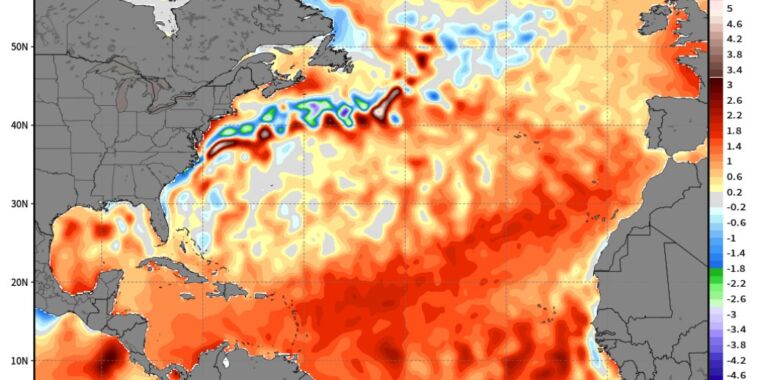Forecasting the Upcoming Atlantic Hurricane Season
As we approach the onset of the Atlantic hurricane season, a recent forecast by hurricane scientist Phil Klotzbach of Colorado State University has caught the attention of experts. Klotzbach and his team are predicting an unusually active hurricane season for the Atlantic basin, comprising the Atlantic Ocean, Caribbean Sea, and Gulf of Mexico.
Unprecedented Projections
The Colorado State forecast anticipates a staggering 23 named storms, more than 50% higher than the typical count of 14.4 named storms. Additionally, they project 11 hurricanes, surpassing the average of seven. The season’s accumulated cyclone energy is estimated to be 70% above normal levels. If this forecast holds true, 2024 could rank among the top 10 most active Atlantic hurricane seasons on record.
This forecast aligns with numerous other seasonal projections issued by various organizations. Amidst a plethora of forecasts, Colorado State’s stands out as the oldest and most influential, emphasizing the expectancy of an exceptionally turbulent hurricane season.
Identifying Contributing Factors
According to Klotzbach, warm sea surface temperatures in the eastern and central Atlantic are a primary driver of the heightened activity. The Atlantic has seen record-breaking warmth for April, indicating advanced conditions that typically wouldn’t be observed until June. It is widely acknowledged that climate change plays a significant role in this warming trend.
Another critical factor highlighted by Klotzbach is the presence of low wind shear, a condition that is vital for tropical cyclone development. Despite the inability to forecast wind shear months in advance, the transition from a weak El Niño to a La Niña in the Pacific suggests diminished wind shear and amplified storm activity.
Interpreting the Forecast
While the accuracy of early April hurricane forecasts may vary, Klotzbach expresses heightened confidence due to prevailing favorable conditions. The implications of an active hurricane season extend beyond meteorological patterns, especially for coastal regions susceptible to tropical storms.
Coastal areas across the Atlantic, Caribbean, and Gulf are perpetually at risk of hurricane impact, with varying degrees of exposure. The increased storm activity in a busier season escalates the probability of a substantial hurricane strike, reinforcing the recurrent aphorism in hurricane circles – “It only takes one.”
Residents in hurricane-prone regions are advised to remain vigilant and prepared, irrespective of seasonal projections. While the threat is omnipresent, a proactive approach to risk assessment, evacuation planning, and resource management is crucial for minimizing hurricane-induced devastation.
Implication for Disaster Management
Government agencies, such as the Federal Emergency Management Agency (FEMA), play a pivotal role in mitigating the impact of natural disasters. The recently approved federal budget for fiscal year 2024 has allocated $20.3 billion to FEMA’s Disaster Relief Fund, underscoring the significance of preparedness and resilience in confronting the forecasted challenges of the upcoming hurricane season.
Image/Photo credit: source url





